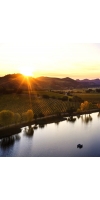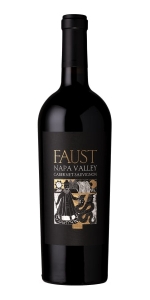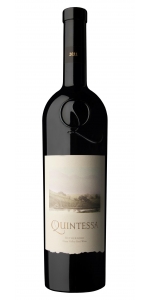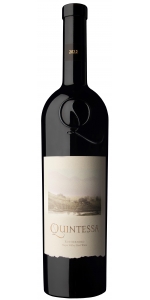Wine from Quintessa

HIDDEN IN THE HEART OF RUTHERFORD, Quintessa is a 280-acre site that reflects a diversity of geology, biodiversity, exposures and microclimates. Inspired by this distinct property, founders Agustin and Valeria Huneeus believed that it was destined to become one of the world’s great wine estates. Today, a total of 160 acres are planted with Cabernet Sauvignon, Merlot, Cabernet Franc, Petit Verdot and Carménère on 26 vineyard blocks. Each block is farmed—organically and biodynamically—harvested, and vinified individually to preserve and enhance the nuances of the land. Inspired by the land’s natural grandeur, the Huneeus family dedicated themselves to capturing the beauty and harmony of this land in the form of a great wine.
Depending on the vintage, Quintessa may include some or all of the five varietals grown on the property: Cabernet Sauvignon, Merlot, Cabernet Franc, Petit Verdot and Carménère. The fruit is harvested early in the morning, then sorted and gravity-fed into oak, stainless steel or concrete tanks and vinified. Once fermentation and maceration are complete, the wine from each plot is aged separately for up to two years in French oak. After the final Quintessa blend is created, the wine is bottled and laid down for yet another year before release.
Faust Cabernet Sauvignon is made from 85% Cabernet Sauvignon, complemented with Merlot, Petit Verdot and Cabernet Franc.
Cabernet’s classic aromas and flavors star in the 2022 Faust Napa Valley. Delicate violet notes lift the dark fruit on the nose—black currant and briary blackberry—layered with pungent forest botanicals, leafy tobacco, graphite, and toasted spice. The velvet of fine-textured tannins backs expressive red fruit flavors on a complex palate, both sweet and savory with mocha and minerality, juicy ripe fruit and freshness.
Review:
Deep garnet-purple colored, the 2022 Cabernet Sauvignon features scents of fresh blackcurrants, blueberries, and black raspberries, plus suggestions of pencil shavings and black olives. Full-bodied, the palate bursts with evocative black fruit flavors, supported by grainy tannins and bold freshness, finishing on a ferrous note. (LPB)
-Wine Independent 93 Points
Quintessa is made from 91% Cabernet Sauvignon, 4% Cabernet Franc, 3% Carménère, 1% Merlot, 1% Petit Verdot.
The 2021 unfolds with Quintessa's signature balance of complex fruit, precise structure, and vital freshness amplified by an especially beautiful growing season. Floral notes— violet and lilac—lift an intensely aromatic bouquet of cassis and black cherry accented with anise, bay laurel, and forest floor. On the palate, firm but fine-grained tannins back dark berry and savory herb flavors interwoven with graphite and iron. Generous texture carries the complex layers to a fine, chalky finish.
Review:
An exquisite wine, relying primarily on Cabernet Sauvignon from a single estate. Aromas of lavender, dried herbs and grapefruit pith combine with flavors of firm fruits and cocoa on a structure of abundant, powder-fine tannin and a mouthwatering finish. This wine is refined, detailed and delicious, with as much elegance as energy. Best 2026–2040.
Cellar Selection
-Wine Enthusiast 100 Points
Quintessa Red 2022 is made from 93% Cabernet Sauvignon, 4% Cabernet Franc, 1% Carménère, 1% Merlot, 1% Petit Verdot.
The 2022 Quintessa is a charming wine, opening with intense aromas of black cherry and cassis that are complemented by notes of tobacco, bay laurel, cedar, and dark chocolate. Plush and inviting on entry, this wine’s flavors align with its aromas. The palate reveals dark fruits and an undertone of crushed rocks, tar, and graphite. On the finish, this vintage displays the signature fine-grained tannin of their Quintessa terroir, backed by voluminous texture and fruit.
Review:
Such an incredible wine here - one of the stars of the September releases. Smells amazing, cooling blueberries with fragrant blackcurrants, edges of florality - totally inviting scents. Full and filling in the mouth, this is ample with such a layered effect, super vertical and elongated. Tight and a little tense but it really works - such balance between black fruit, dried herbs, high acidity and a profound structure. Refined and beautifully presented. So much life, so much energy - this is pure class. A wine you don't want to put down. Feels hands off despite such concentration and power. Ends salty with sticky liquorice, mint and cooling wet stones. You could definitely drink this now but it will age too! 1% Merlot and 1% Petit Verdot complete the blend. One of the final few vintages with Rodrigo Soto at the helm - he stepped down last year to concentrate on his family project Far Mountain in Sonoma Valley which is worth following. Winemaker Rebekah Wineburg.
-Decanter 99 Points
- back
Selected Options
Wineries
Categories
Pricing
Countries
Regions
Grape Types
Wineries
Organic/Free Shipping
All older vintage wines have been purchased from a single collectors cellar. Pictures can be requested before shipment.
Quercia nelle Langhe Nebbiolo Langhe is 100% Nebbiolo.
Garnet red, bouquet is fruity with reminiscences of violets and raspberries.
Full bodied, interesting and intense.
Manual Harvest at the beginning of October.
The grapes are delicately pressed and the stalks are removed. The limpid must ferment in stainless steel vats at a controlled temperature of 26°C for 12 days. After racking the new wine is put into 25 and 30 hl Slavonian oak barrels for long months. Next, it is bottled for reaching the market.
Pairs well with ribeye, red meats.







